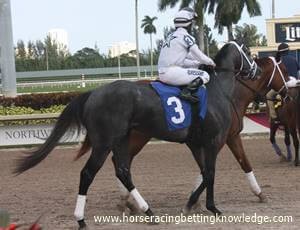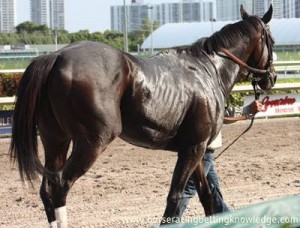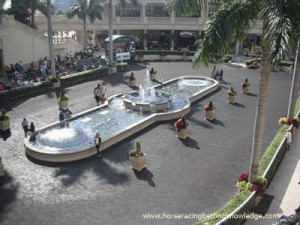Tell “Tail” Signs
What to look for when you are considering making wagers on a horse race. The Tell “Tail” Signs of a horse ready for race day.
Positive and Negative signs to look for when picking out a horse to bet on at the track.
One of the advantages of being at the track is studying the horse’s demeanor. In the paddock area and then on the race track during the post parade and warm-ups. Here are a
few qualities tell “tail” signs to make note of while you’re watching each horse before they approach the starting gate. Once the horses are in the public’s view, at this point you should be able to look for positive and negative signs that may affect the horse’s performance.
 Positive traits to look for:
Positive traits to look for:
- At first glance, the horse should look healthy. A shiny coloring with a natural healthy glow not caused by moisture.
- The horse should exhibit a defined muscle tone. A well-rounded belly with no ribs sticking out.
- A horse’s eyes should appear clear and bright with a sharply focused look.
- A horse’s ears that are pointed straight up and down or slightly forward are good signs the horse is fully alert and paying attention to their surroundings.
- The horses should demonstrate a “fluid gait” when they walk and with a slight prance.
- Horses that prance with their neck bowed are also a good sign.
- The horse’s tail should be arched, this is a sign they are happy, sharp, alert and ready to go.
 Negative traits to look for:
Negative traits to look for:
- If the coat is dull or shows signs of moisture (excessive sweating) or washed out on a cool day could be signs of a nervous or anxious horse.
- A horse that appears to be overweight and the opposite being underweight with their ribs protruding show signs that they’re not in race shape.
- Ears that are pinned back resembling a mule or donkey. This is a sign the horse is angry, agitated and most likely doesn’t want any part of the race.
- A horse that shows too much of a prance or is stomping around or rambunctious. If a horse’s stride has an uneven gallop.
- An incessant tail swish points to an angry horse.
- A horse that exhibits low energy dragging their feet or just seems disinterested.
There are several great books out there that will provide many other traits to watch for before placing a wager. Check out our Online Resources for many books we have learned a lot from.

